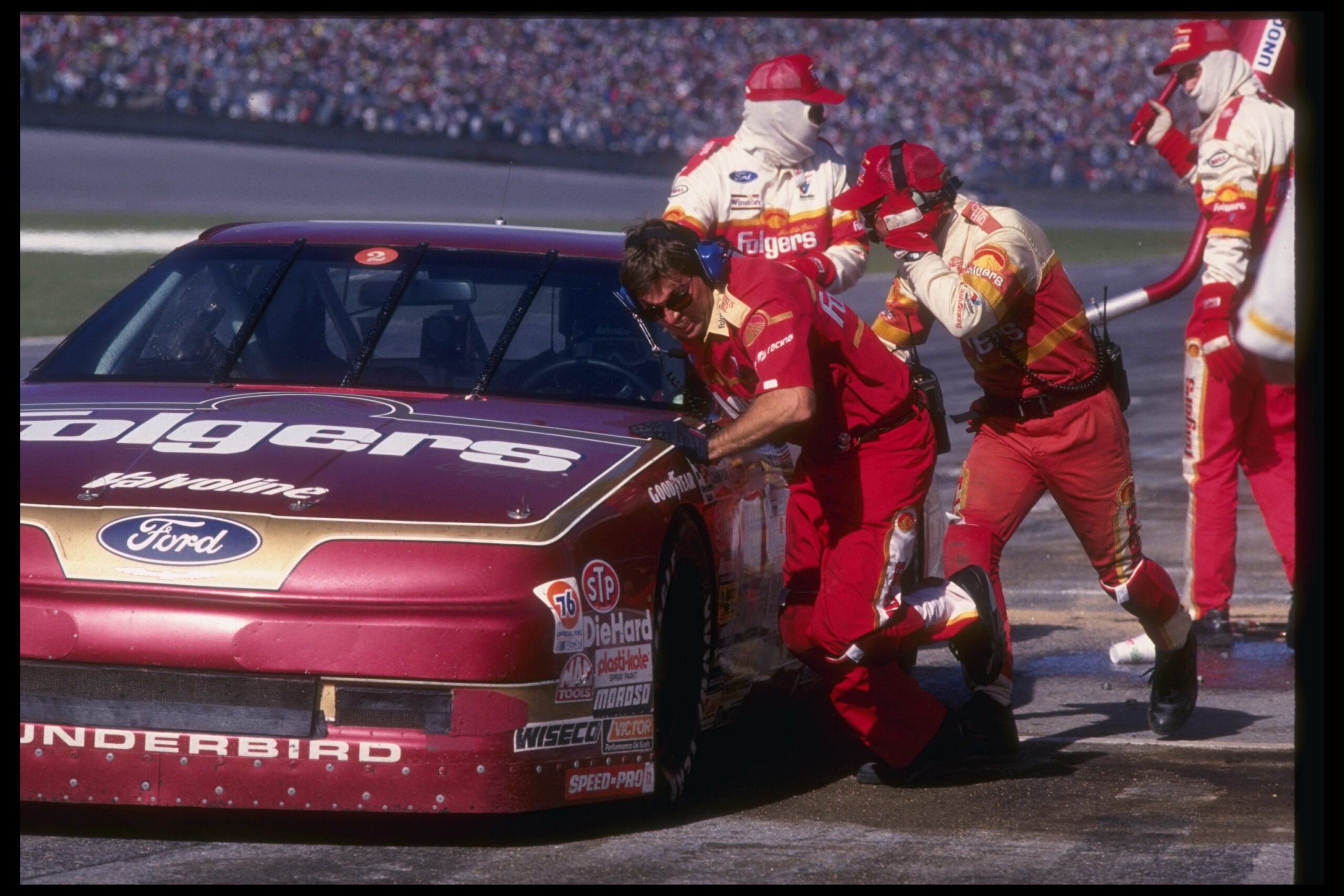
This week has been rife with controversy about pit stop times. Hendrick Motorsports claimed the record for the fastest 4-tire pit stop in NASCAR history, only for Stewart-Haas Racing to claim they hold the crown. Regardless of who was right, it showcases just how far pit stops have come, and this is the evolution of a NASCAR pit stop.
Just gonna leave this here. https://t.co/vuL6kDGsfk pic.twitter.com/nCgwXyIK0u
— Stewart-Haas Racing (@StewartHaasRcng) April 16, 2024
Pit stops were much different in the early days of the sport. They were more of a necessary evil than something that teams could use to gain an advantage on the track.
The cars were not nearly as durable as the ones driven today, so, more routine maintenance was carried out on a typical stop. The races were also generally much shorter, meaning that some races didn’t see pit stops. The pit crews were usually just mechanics on the race team who tried to do everything as fast as they could. The result was that pit stops could be upwards of 45 seconds to a full minute.
However, The Wood Brothers realized how much of an advantage they could gain in the pits. This came into play during the 1963 Daytona 500 when Tiny Lund pulled in for a quick pit stop with just enough fuel to get to the end to win the race in upset fashion over drivers like Fred Lorenzen and Ned Jarrett. This race showcases how primitive pit stops were at the time.
The Wood Brothers took their talents to Indianapolis in 1965, pitting Jim Clark’s car. Thanks in part to a new gravity flow refueling system, The Wood Brothers pitted the No. 82 car to victory in the Indianapolis 500. From there, things began to evolve.
The Wood Brothers became the gold standard for pit crews throughout this era. Everyone wanted to be them, and they emphasis on things like choreographed pit stops allowed them to gain much-needed time in the pits.
Teams began to realize that pit stops could be the difference between winning and losing a race. The cars became more durable, meaning less routine maintenance was carried out on a pit stop. The tires became easier to change with the invention of air guns to get the 5-lug nuts off the tire.
This took shape all throughout the the latter half of the 20th century, until the “Rainbow Warriors” revolutionized the game. To gain an extra advantage on pit road, Ray Evernham, crew chief of the No. 24 car driven by Jeff Gordon, had the idea to hire athletes to pit the car. This began the era of pit crew members having one sole job, to pit the race car, similar to a sports team.
This was when the modern pit stop began to take shape. Some minor changes were made throughout the 2010s, but, the pit stop largely looks the same as Evernham put together in the 1990s.
Pit crews also shrank during this era. There used to be 7 crew members, but, in 2011, NASCAR implemented a new gas can, which negated the need for 1 crew member. Later that decade, NASCAR decreased the total to 5 by getting rid of a second tire carrier.
In the Next-Gen era, a major change was made to the cars. Instead of 5 traditional lug nuts, there would be 1, center-locking nut that would hold the wheel in place. With less time needed to change tires, pit stop times began to fall.
Nowadays, there are 5 members on a NASCAR pit crew. There are two tire changers (front and rear), one tire carrier, one jackman, and a gasman. The lower series such as Trucks and Xfinity still use the traditional 5 lug nuts, so, the pit stops are largely unchanged from the pre-Next Gen era.
A byproduct of Evernham’s revolutionary pit stop ideas, the pit crew system has become a major part of NASCAR race teams. Bigger teams will often share pit crews with smaller teams they are aligned with, and pit crews are full-time employees. Their job is to pit the race car as fast as possible, and many of them are former athletes who have played sports at high levels.
Pit stops underwent some major changes throughout history. It’s grown into a big piece of NASCAR competition, and teams who do well on pit road, often end up winning races.
